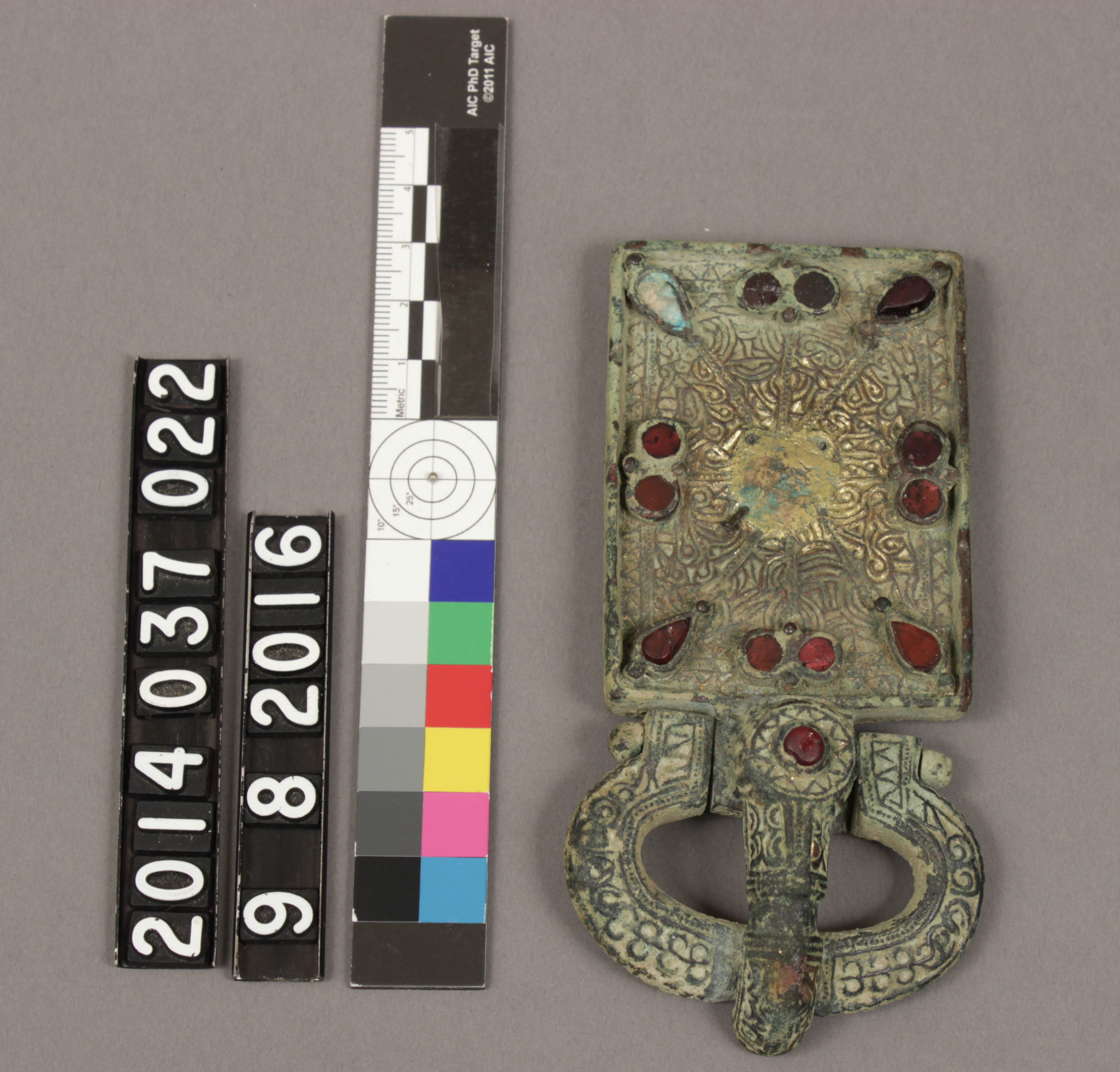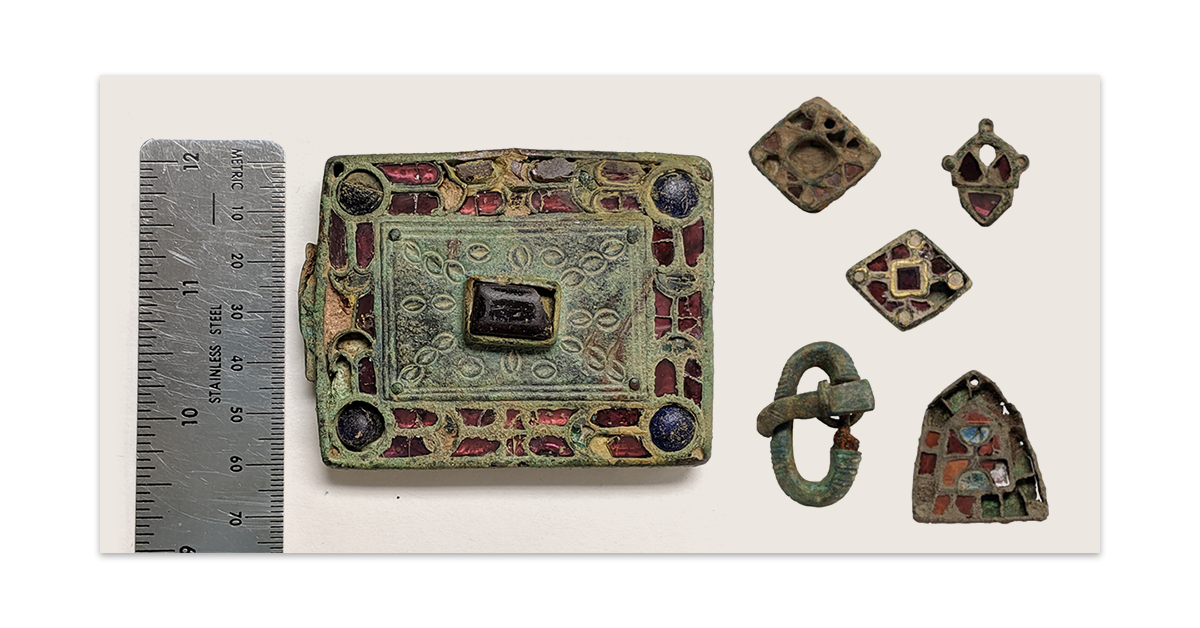The Michael C. Carlos Museum has launched a new online exhibit, “Ornament in Flux: Personal Ornament and Prestige during the Migration Period,” with the help of the Emory Center for Digital Scholarship (ECDS), who have an ongoing partnership with the museum. The online exhibition was conceived by Kelin Michael, PhD candidate in Art History at Emory University, as part of the 2019 Mellon Graduate Fellowship in Object-Centered Curatorial Research. The interactive exhibit introduces the Carlos Museum’s Migration Period objects (circa 5th-6th century CE) and allows visitors to explore the details of different types of personal adornment from various institutions, placing the objects in conversation with a larger corpus of Migration Period jewelry. ECDS’s Digital Projects Specialist Joanna Mundy aided in the creation of this online exhibit.
- Link to online exhibit: https://ornamentinflux.collections.carlos.emory.edu/
Kelin Michael explains that she spent the year of 2019 researching eight Migration Period objects in the Carlos Museum (two belt buckles, one buckle counterplate, one buckle loop, two belt mounts, one strap mount, and one strap end). Her project investigated the various contexts of these objects: material, geographical, and original use. She explains that by “investigating these categories, I was able to more firmly establish the nature of these objects in order to place them in dialogue with comparanda” and the pre-existing field of research.
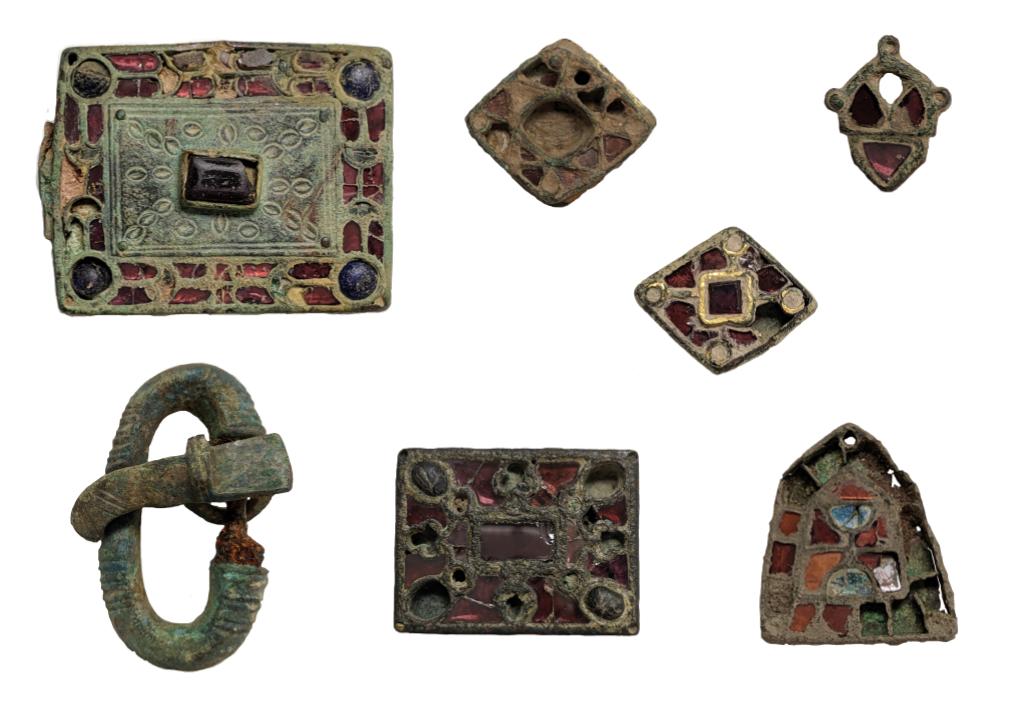
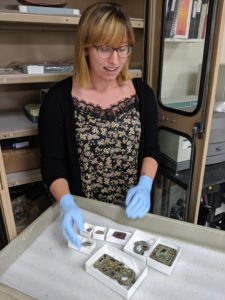
Kelin worked with Dr. William B. Size (Professor Emeritus of Geology, Department of Environmental Science) and members of the Carlos’ conservation lab to perform X-ray fluorescence (XRF) and microscope analyses to determine each object’s material composition. She also traveled to various museums (including the Musée de Cluny, The Metropolitan Museum of Art, the British Museum, and the Museo Arqueológico Nacional) in order to determine the geographic origins of the Carlos objects. Kelin explains in her Mellon write-up that, after comparing materials and meeting with other experts in London and Madrid, it became clear that “based on material and stylistic comparisons, the majority of the Carlos’s group of objects are late fifth or early sixth century and come from northern Spain.” Kelin presented these and other findings in January at the Carlos, sharing this research with the broader community.
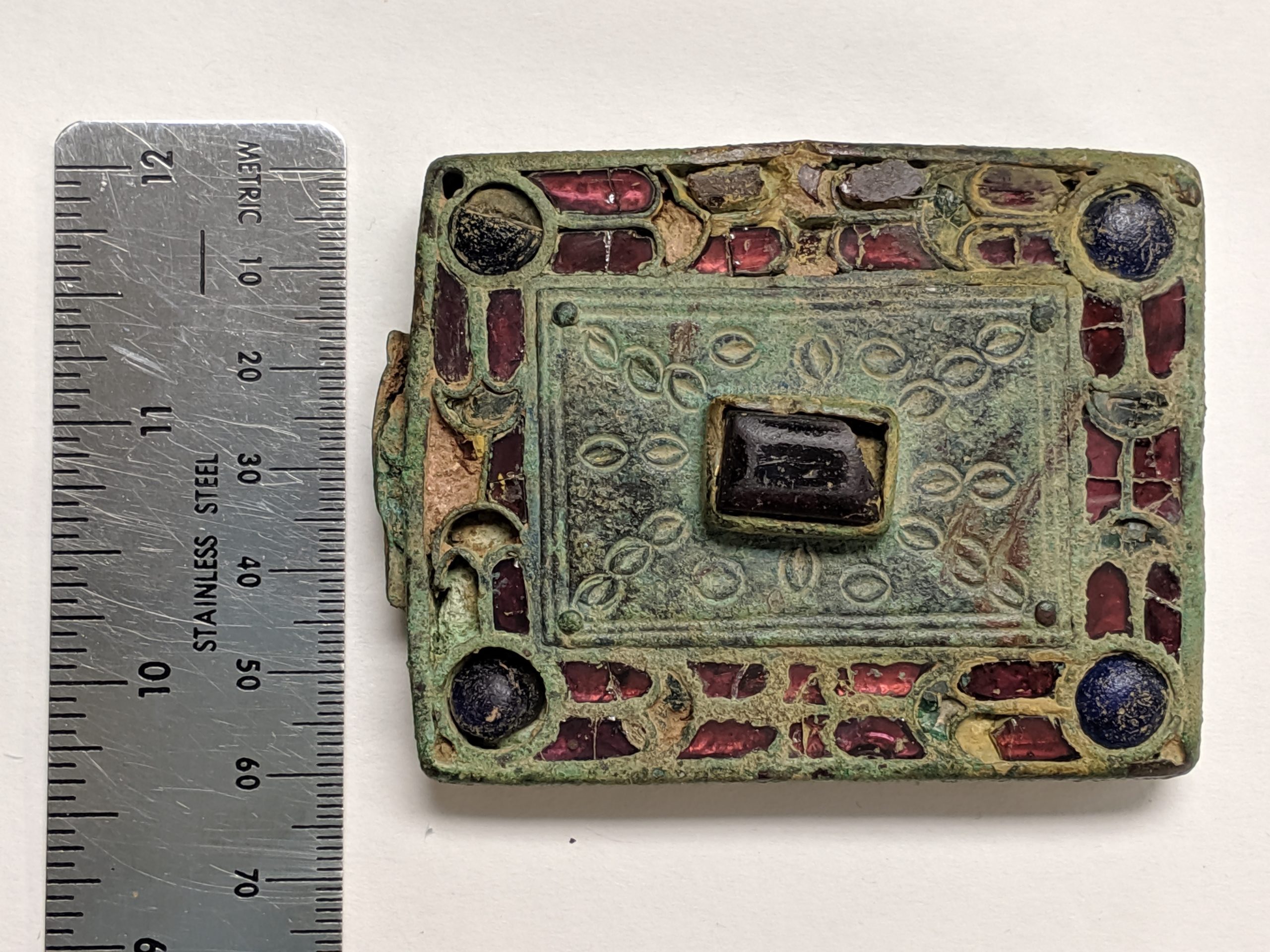
This research culminates in the newly-launched online exhibition for the Carlos Museum. Joanna Mundy, Digital Projects Specialist at ECDS, provided training in how to use Omeka Classic for the online exhibition, consulting with Kelin on how her design goals could be implemented in the Omeka site. Joanna also provided continued support with questions and technical troubleshooting while entering exhibition data into the site. As mentioned above, this project is a continuation of ECDS’s partnership with the Carlos Museum to assist in creating online exhibitions. A prior example of this partnership was an online exhibit that debuted in 2017: Threads of Time: Tradition and Change in Indigenous American Textiles. (You can read more about Threads of Time on our blog.)
